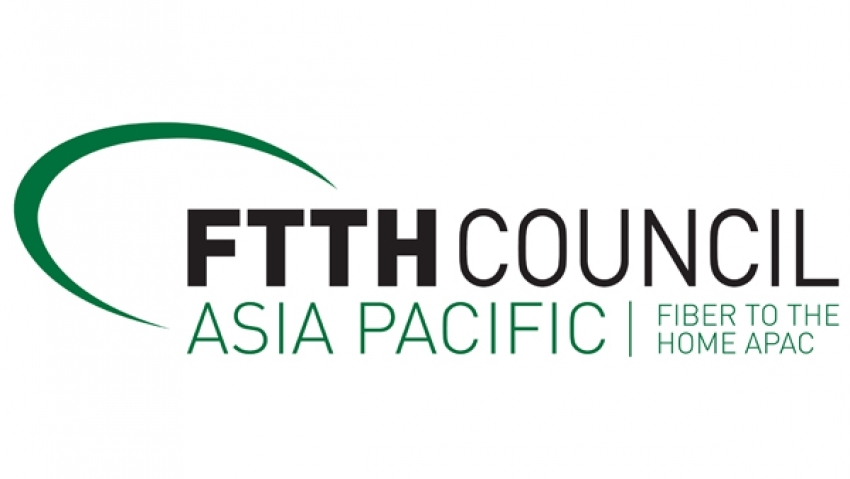News
Practical FTTX & Home Networking Service Management Tips #FTTHAPAC2018
Practical FTTX & Home Networking Service Management Tips A Service Provider Can Take Home For Deployment
Article by William L. Yan.
May 11, 2018
These days, we hear the word “transformation” being used a lot. Indeed we are living in an exciting time where the world is ever more connected and interconnected, information being transmitted ever more faster, and new business models and services are introduced ever more often. In concert with mobile industry’s advancements from 2/3G to 4G LTE and onto 5G, the fixed network has also garnered unprecedented attention and investment capital. We are talking about fiber development and various flavors of fiber deployment- to the Home (FTTH), to the Building (FTTB), or to the Premise (FTTP). Fiber deployment has become not only a telecom initiative, but also a national economic and social development – for connectivity, for information, for entertainment, for societal changes in enabling smart cities, smart homes, smart cars – smart lifestyles!
And indeed, that was the central theme of the FTTH Council APAC Annual Conference just held in May 8-10 in Manila, the Philippines.
A clear example of taking FTTH very seriously is the host country for this year’s FTTH APAC conference, the Philippines. Operators came out in full force, from the established major players such as PLDT and Globe Telecom, touting their achievements and illustrating their plans, to smaller, entrepreneurial upstart and regional players like ConvergeICT and PCTA, who is trailblazing fiber deep service deployment.

The Asia Pacific market is such a diverse region when it comes to cultural differences and stages of economic development. The reason the FTTH Council was able to bring everyone together into one room seems universal: it is deep deployment of fiber. The region generally enjoys historic economic boom across the board as well as a more participatory and encouraging regulatory environment. And with less labor-cost constraints, we heard case studies from emerging markets like Nepal and Bangladesh as well as advanced ones like Singapore and Hong Kong.
There’s a certain level of sophistication even in this region when it comes to fiber. People are talking more about fiber network service management challenges and solutions vs. how to just dig the hole in the ground and string fiber. FTTH use cases invariably involve discussing smart cities, smart homes and smart communities. It’s not a surprise to hear that countries like China would not even allow a building to be built without fiber connections anymore.
Given its fast economic development and the blessing of less legacy systems in place, the APAC region is in a unique position to offer lessons learned and best practices shared, on how to deploy and manage a fiber network and enhance service management capabilities such as Quality of Service (QoS) and Quality of Experience (QoE). Key aspects discussed at the conference were:
• Infrastructure. To stay ahead of competition in the FTTH market, – fiber all the way (FTTH) in green field makes sense to future proof your network, or, in order to leverage existing in-building infrastructure, a FTTB – building. For example, you’ve got fiber all the way to the curbside of a subdivision or to the basement of a building (residential or small office). Instead of waiting for clearance with building owners or scheduling work crew to pull fiber to each floor and wire the rooms, leverage existing in room coax, using Multimedia Over Coax (MoCA), light up the building with fiber-like bandwidth faster, before your competition gets there.
• Management Platforms – like the one AVSystem exhibited – TR-069 Auto Configuration Service (ACS) platform, which is vendor-neutral and serves all types of devices. It allows monitoring of all QoS parameters, diagnostics of scheduled events or troubleshooting, and auto-discover devices. Provisioning of devices becomes easy with zero-touch provisioning rules and templates. Best yet, it’s an open platform for ease of integration through SOAP API. Fiber-deep means now a service provider has a near real-time feedback loop to get that customer experience data from the network edge back to central office to assist troubleshooting, enhanced services, and drive overall customer relationships. CPE management becomes front and center for understanding customer experience, reducing troubleshooting calls and truck rolls and expanding value add service revenue streams.
• Service. In the fixed network arena, Service Providers are also turning their attention to IoT-driven fiber deployment. With a reliable network that reduces or eliminates the actives in the network, a service provider is better equipped to go after enterprise revenue opportunities in the IoT world, where SLAs are stringent and network uptime is a must.
The FTTH APAC Council conference definitely offered a right mix of strategies and case studies, from policies to deployment tools, from here and now as in fiber splicing to what’s coming up on the horizon. Sizable event yet intimate enough to allow one-on-one in-depth discussions, all mixed together with good amount of networking opportunity among FTTH solution eco-system participants. And most important of all, attendees were able to take home tips from network and service designs to installations, from management platforms to deep technical how-tos.
Similar news
Open-source LwM2M 1.1 now available with AVSystem's Anjay 3.0 IoT SDK
Products & Solutions 18 May 2022Krakow, Poland, May 18th, 2022--Today AVSystem is thrilled to announce the release of new Anjay 3.0! Since the...
AVSystem First to Connect LPWAN IoT Devices to Azure, AWS Clouds with LwM2M
Products & Solutions 23 March 2021By combining device energy savings and lower data consumption with existing cloud services, enterprises can re...
AVSystem introduces USP support in Cloud ACS
Products & Solutions 25 February 2021AVSystem announces the introduction of the User Services Platform protocol support in its Cloud ACS platform. ...